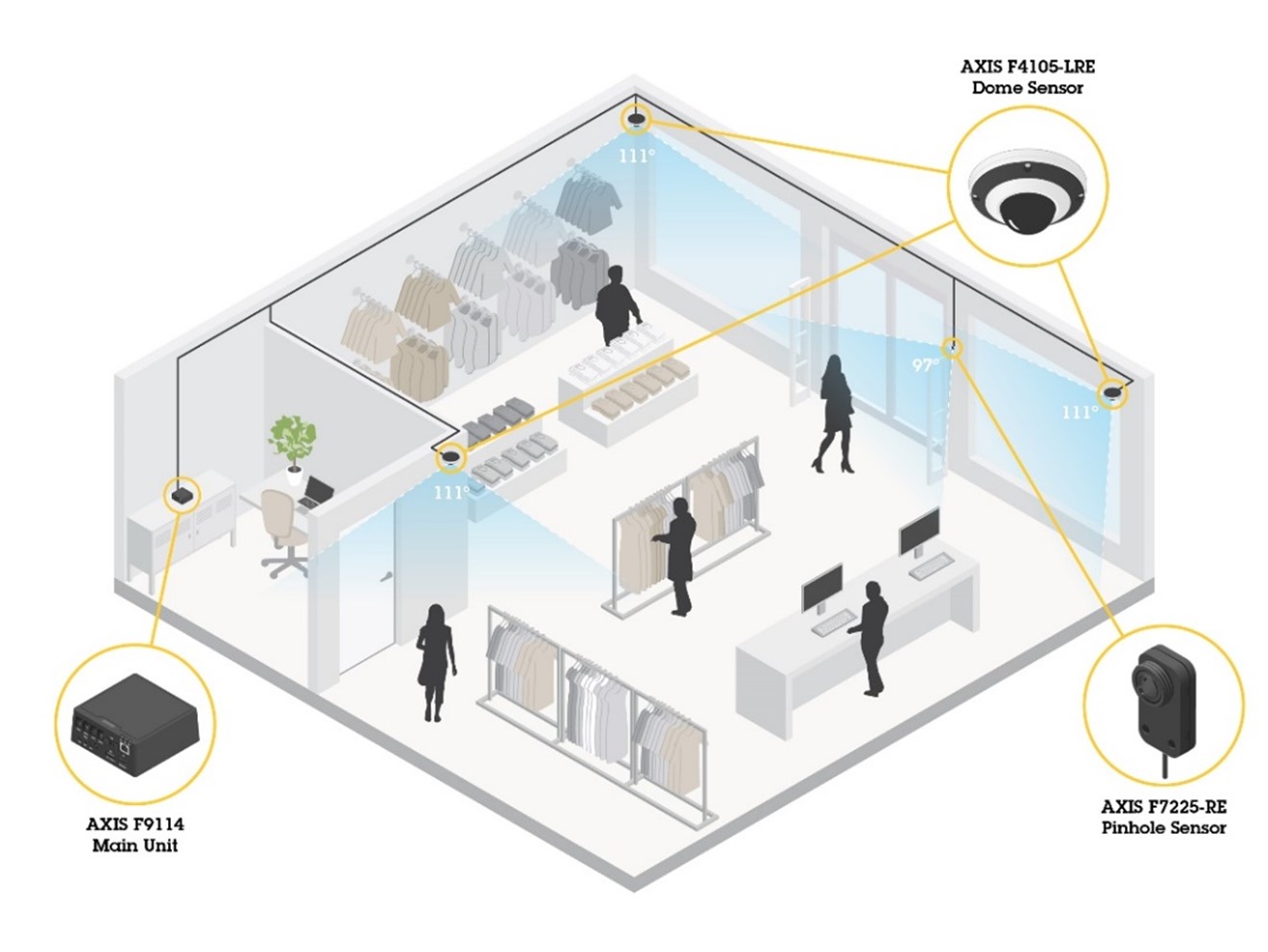Empowering flexible and scalable solutions with modular cameras
We are all familiar with traditional video surveillance cameras in retail stores, at banks, as we travel through airports or eat at restaurants. Over the past several decades, security cameras have become almost ubiquitous in our daily lives. They might blend into the background yet are still instantly recognizable: a dome in a ceiling, perhaps, or mounted high on the wall of a building, or a visible box camera atop a pole at a busy intersection. There is a timelessness about these typical camera installations.
Times change, however. Schools and business and hospitals everywhere are being asked to do more with less, to adapt to ever-evolving security challenges, to “think outside the box.”
How are modular cameras different than traditional surveillance cameras?
It helps to think of any surveillance camera as a combination of the “brains” and the “eyes.” These are typically part of the same device, even though we often think of a camera primarily in terms of their optics, or what they see. For example, optics would be limited to things like resolution, different lenses (fixed, varifocal, or fisheye), and vertical or horizontal field of view. But a surveillance camera would also have one or more processors, memory, power, a network port, audio inputs and outputs, other input/output ports, an operating system, and so on – the “brains” of it all.
Simply put, modular cameras separate the optics from the rest of the device. Everything that we previously considered to be the brains of the camera now exists within a small box called the main unit. The eyes are sensor units. Similar to traditional surveillance cameras, modular sensors come in a variety of resolutions and lens types.
Main units and sensors can be connected by up to 98 feet of cable, introducing a great deal of flexibility that wouldn’t otherwise exist.
When you don’t want anyone to see the camera
One of the most well-known (and longest-established) uses cases for modular is a covert camera. A pinhole sensor allows for extremely creative placement, nearly invisible to the naked eye. This might be at eye level in a door mullion, behind a screw in a gang box, or hidden in the corner of a shipping container. The sensor itself is tiny and discrete. It can be hidden within or behind a limitless variety of enclosures because the main unit doesn’t need to be physically located anywhere near it.
A similar use case requires a discreet (or completely hidden) camera; however, instead of capturing surveillance footage of people who don’t think there’s a camera nearby, a public view monitor shows people that they are being recorded – whether this is at the front entrance of a store, at a self-checkout kiosk, or in a queue at airport security. With a sensor hidden in a bezel surrounding the TV or monitor and an HDMI connection to the main unit discretely attached to the back, a modular solution offers a simplified and non-intrusive aesthetic for this specific use case. By thinking outside of the box – or in this case, away from ceilings or walls – it’s clear that modular cameras can solve a variety of surveillance challenges.
Tight spaces? No problem!

Another innovative application of modular units comes in the form of a main unit without any protective casing. This form factor, known as barebone, is perfect for integrating the entire modular solution inside something else.
An ATM, for example, could have multiple pinhole sensors installed (one to monitor regular customer usage and a second for when it’s opened for maintenance or service). The slimmer form factor of the barebone main unit allows it to fit inside the already tight confines of the ATM. A network cabinet within a data center is another example. Tucking one or more modular cameras into a shelf or the cabinet door, covering the front and back of the rack, provides excellent surveillance and operational oversight.
Watch this webinar for an in-depth discussion on how modular solutions provide flexible surveillance within versatile environments.
Watch webinar about modular solution
Doing more with less – a powerful, scalable solution

When it comes to scalability, there are few options better than a modular solution. Some main units can connect to four different sensors. Importantly, those sensors don’t have to all be the same type, nor do they have to be located anywhere near one another. This enables a surveillance solution that might appear to be identical to a traditional installation – with dozens of mini-domes mounted to ceilings and walls, either indoors or outdoors – but is much more efficient and budget-friendly.
The main unit requires a single network cable for power and connectivity. A traditional camera installation on a typical 16-port Power over Ethernet (PoE) network switch is limited to 16 surveillance cameras. A modular solution would quadruple that, with 64 cameras powered by those same 16 PoE ports. Video Management Software (VMS) licenses work much the same way: a single license is required for each main unit, so a 64-camera modular solution uses up only 16 VMS licenses. These are recurring savings, every year, in power consumption and software licensing fees.
Finally, when replacing or upgrading a modular solution, the separation of the main unit from the sensors again provides quantifiable benefits. It is not necessary to get on a lift or a ladder to swap out a main unit, resulting in tremendous time and labor savings over the lifetime of the system.
Ruggedized and ready to roll

What if surveillance is required in a mobile environment? Whether that’s an emergency vehicle, school or city buses, fleet vehicles, delivery trucks, squad cars, or even trains – modular solutions have evolved to address these needs.
There are a few key features to consider: first and foremost is the rugged nature of both the main unit and the sensors. It’s also important to remember not just the components, but how they all connect. FAKRA connectors, an automotive industry standard, help ensure a consistent, solid connection in a mobile environment. There should also be a mechanism to gracefully shut down after a specific amount of time in order to avoid draining the vehicle battery when not in use. All of these contribute to make a robust solution capable of operating in a challenging vehicular environment.
Conclusion
The possibilities for modular solutions in your environment are limitless: the small form-factor of sensors, especially pinhole, enables discrete surveillance; disconnecting those sensors from the main unit means they can be installed inside ATMs, network cabinets, and fast-food kiosks, to name a few. A modular solution is a cost-effective approach for more traditional surveillance needs, while simultaneously offering a rugged set of capabilities for installation in a moving vehicle.
Axis modular solutions enable creative camera placements without sacrificing features or image quality.
To learn more, click here.


